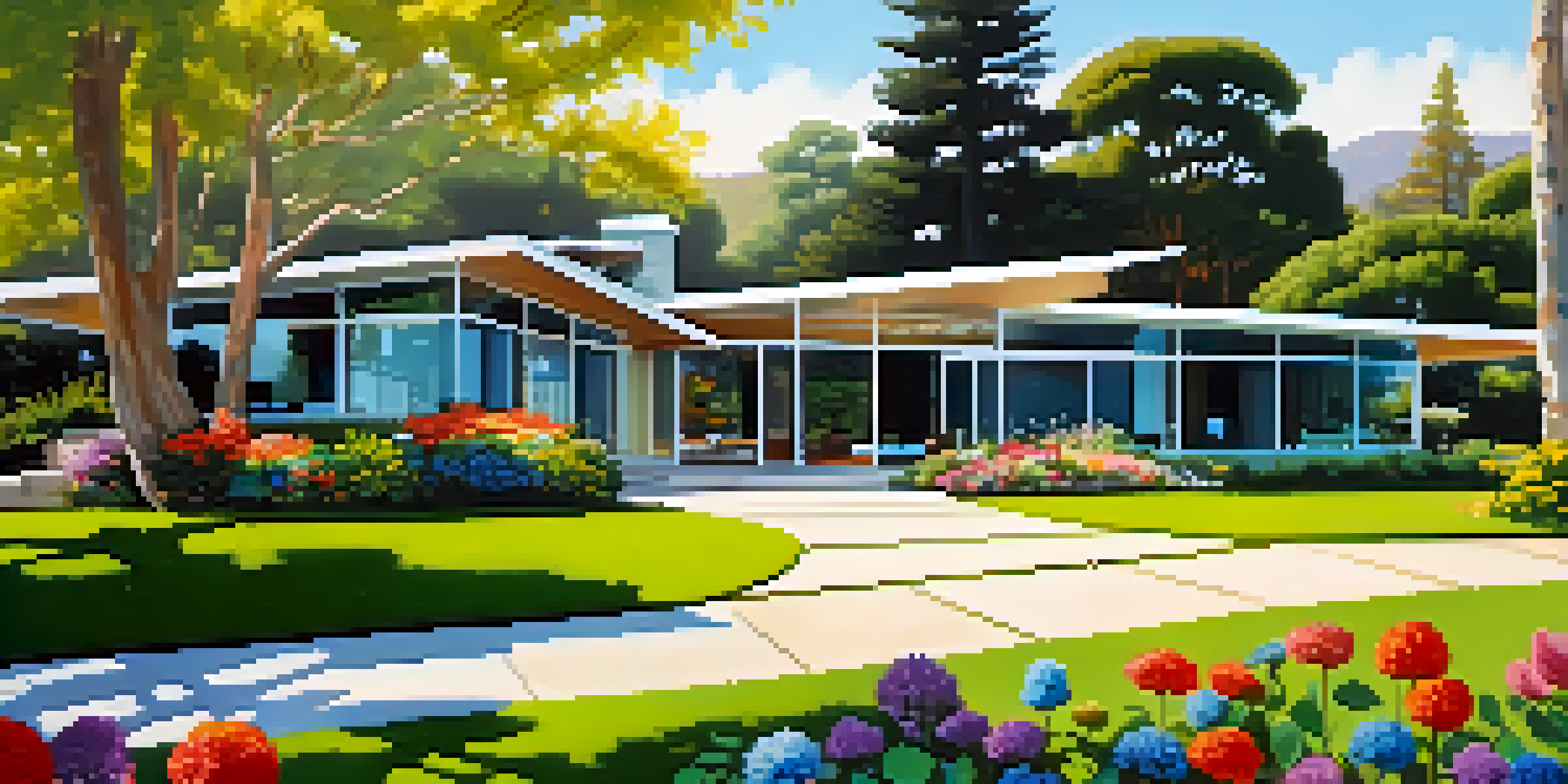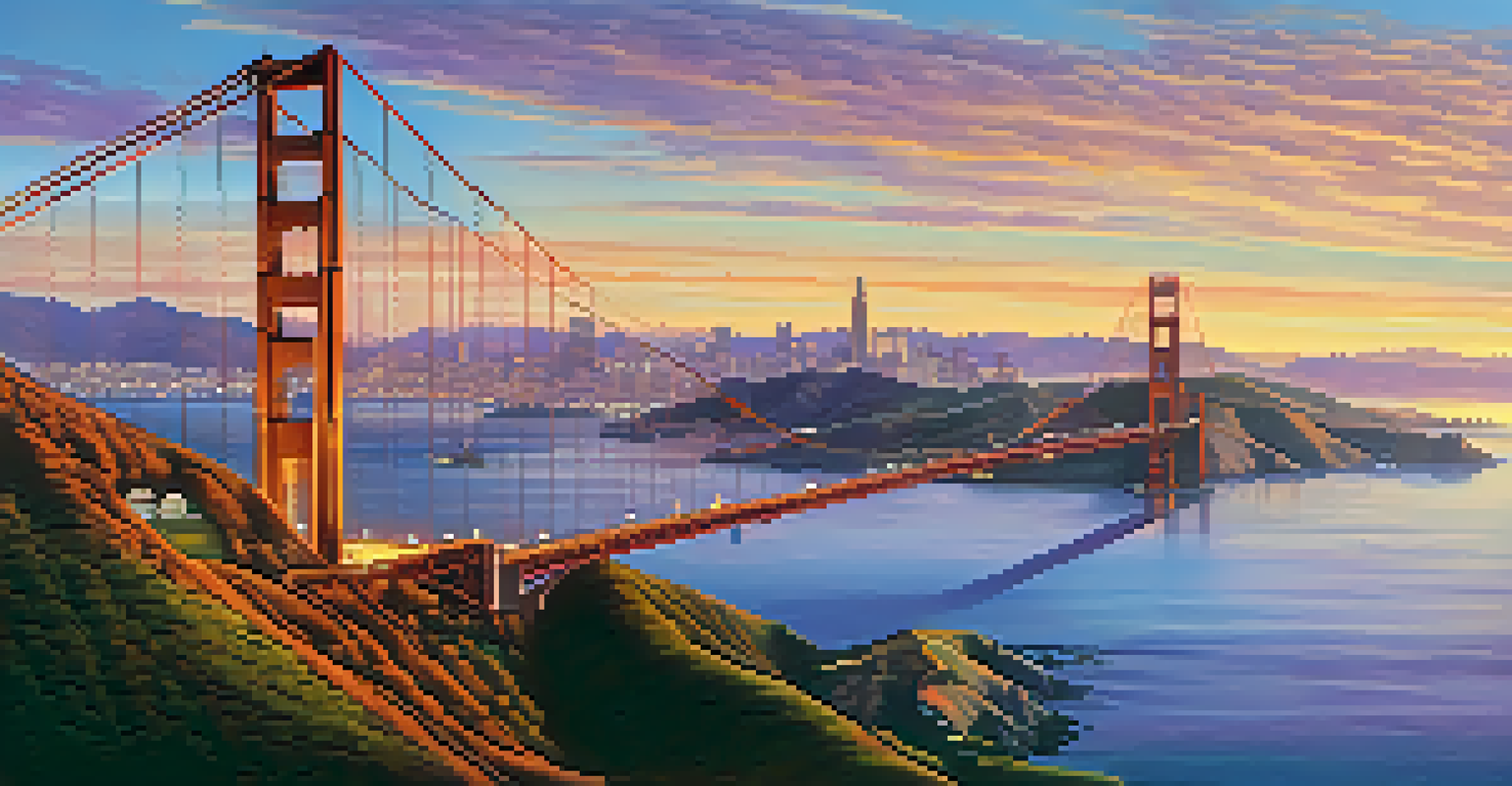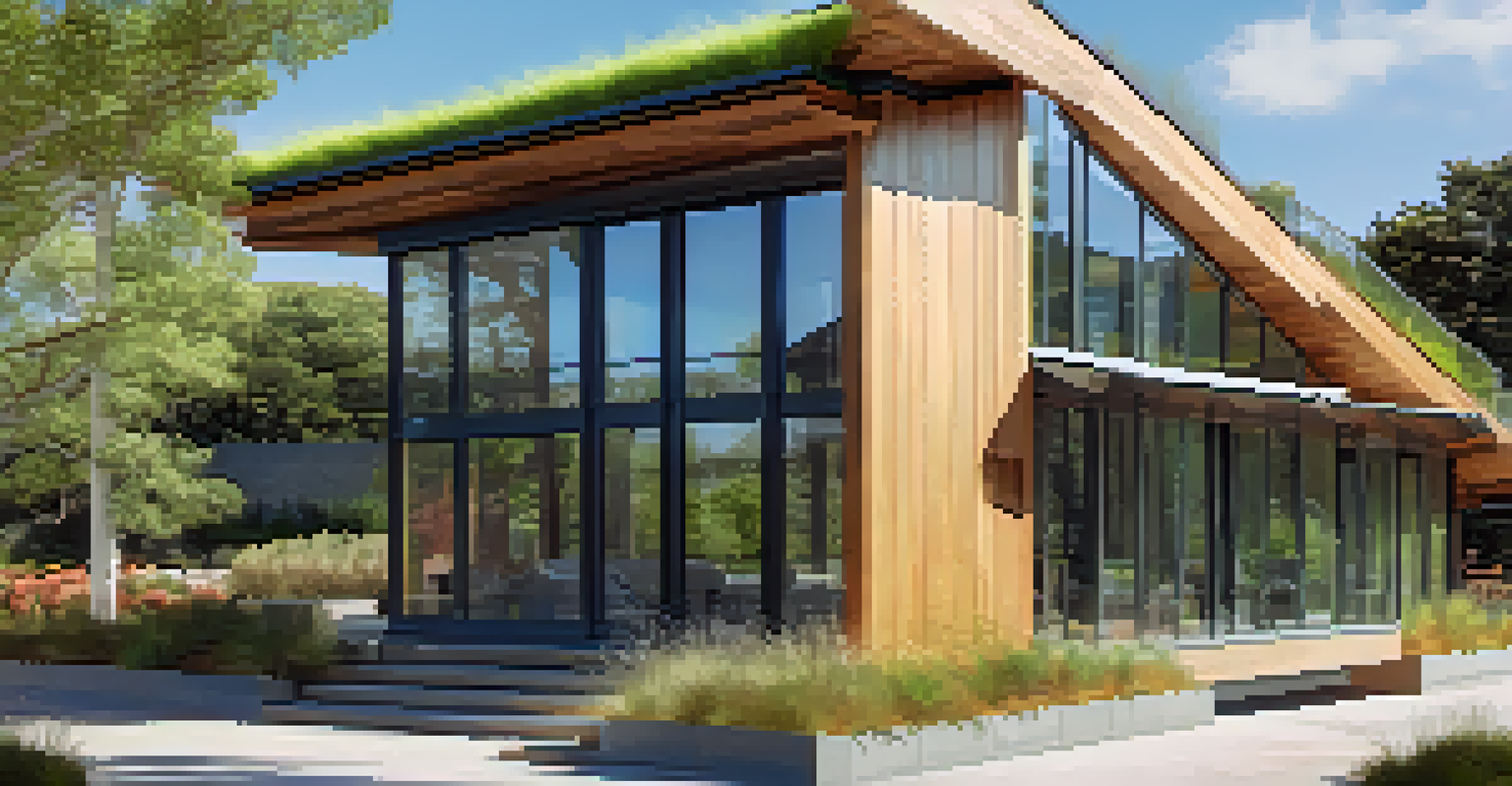California's Role in Shaping Modern Architectural Trends

Introduction to California's Architectural Landscape
California has long been a canvas for innovative architectural designs, reflecting its diverse culture and geographical beauty. From the stunning coastline to the vibrant urban centers, the state offers a unique backdrop that inspires architects from around the world. Its history of experimentation and creativity has made it a leader in contemporary architectural trends.
Architecture should speak of its time and place, but yearn for timelessness.
The state's architectural evolution can be traced back to the early 20th century, where movements like the Arts and Crafts style began to emerge. As California grew, so did its architectural identity, leading to a rich tapestry of styles that cater to the needs of its residents and the environment. This blend of creativity and practicality has paved the way for modern innovations.
In this article, we will explore how California's rich history, diverse culture, and environmental challenges have all played a significant role in shaping the architectural styles we see today. From sustainable designs to the iconic mid-century modern movement, California continues to influence architects and designers across the globe.
Mid-Century Modernism: A California Phenomenon
Mid-century modern architecture emerged in California during the 1940s and 50s, reflecting the post-war optimism of the era. Characterized by clean lines, open spaces, and a seamless connection to nature, this style became synonymous with California living. Iconic architects like Richard Neutra and Joseph Eichler brought this aesthetic to suburban neighborhoods, making it accessible to many.

The use of innovative materials, such as glass and steel, allowed for an abundance of natural light and indoor-outdoor living spaces that became essential in California's warm climate. Not only did mid-century modernism revolutionize residential architecture, but it also impacted commercial buildings, schools, and public spaces throughout the state. This style highlighted the importance of design that harmonizes with the environment.
California: A Hub of Innovation
The state's architectural landscape showcases a blend of creativity and practicality, influenced by its diverse culture and environmental challenges.
Today, mid-century modern homes are highly sought after, and their influence can be seen in contemporary designs that prioritize simplicity and functionality. The legacy of this architectural style continues to inspire new generations of architects and homeowners alike.
Sustainable Architecture: Leading the Green Revolution
California is at the forefront of the sustainable architecture movement, setting high standards for eco-friendly designs. With its abundant sunshine and diverse landscapes, the state has become a hub for innovative building techniques that reduce environmental impact. Architects are increasingly incorporating renewable energy sources, like solar power, into their designs to create sustainable living spaces.
The best way to predict the future is to design it.
The state's stringent building codes and regulations encourage the use of sustainable materials and practices, further solidifying California's reputation as a leader in green architecture. This commitment to sustainability not only benefits the environment but also enhances the quality of life for residents by creating healthier living spaces. Examples include green roofs, rainwater harvesting systems, and energy-efficient appliances.
As climate change becomes an increasingly pressing issue, California's architectural trends are likely to continue leaning towards sustainable practices. This focus on green design not only influences local projects but also serves as a model for architects worldwide, showcasing how architecture can play a crucial role in combating environmental challenges.
The Impact of Technology on Modern Design
In recent years, technology has dramatically transformed the architectural landscape in California. From advanced software for design visualization to innovative construction techniques like 3D printing, technology has streamlined the design process and allowed for more complex structures. This integration of technology has not only improved efficiency but also enhanced creativity in architectural design.
California's tech-rich environment, particularly in Silicon Valley, has fostered a culture of innovation that spills over into architecture. Architects are increasingly collaborating with tech companies to create smart buildings that utilize automation and connectivity to enhance user experience. These smart features can range from energy-efficient systems to integrated security measures, making buildings more functional and responsive.
Embracing Sustainability in Design
California leads the way in sustainable architecture, integrating eco-friendly practices and technologies to create healthier living spaces.
As technology continues to evolve, the possibilities for architectural design are limitless. California’s role in this technological revolution positions it not only as a trendsetter in design but also as a pioneer in creating spaces that adapt and respond to the needs of their inhabitants.
Cultural Diversity and Its Influence on Architecture
California's rich cultural diversity has significantly influenced its architectural trends, resulting in a unique blend of styles that reflect the state's multifaceted identity. Various cultural groups have contributed to the architectural landscape, infusing traditional elements from their heritage into modern designs. This fusion of styles creates spaces that resonate with the diverse communities that inhabit the state.
Architects in California often draw inspiration from various cultural backgrounds, leading to innovative designs that celebrate inclusivity. For example, the use of vibrant colors, intricate patterns, and traditional materials can be seen in many residential and commercial projects. This cultural exchange not only enriches the architectural scene but also fosters a sense of belonging among residents.
As California continues to evolve, its architectural landscape will likely remain a testament to its diverse population. This ongoing dialogue between cultures will shape future designs, ensuring that architecture in California reflects the values and aspirations of its communities.
Iconic Landmarks That Define California's Skyline
California is home to numerous iconic landmarks that have become symbols of modern architecture. Structures like the Walt Disney Concert Hall in Los Angeles, designed by Frank Gehry, showcase the state's penchant for bold and innovative designs. These landmarks not only enhance the skyline but also serve as cultural hubs that attract visitors from around the globe.
The Golden Gate Bridge in San Francisco is another prime example, representing not just engineering prowess but also artistic vision. Its unique design and stunning backdrop have made it one of the most photographed bridges in the world. These iconic structures highlight how architecture can blend functionality with aesthetic appeal, creating lasting impressions.
Cultural Diversity Shapes Architecture
The rich cultural diversity of California results in innovative architectural designs that reflect the state’s multifaceted identity and community values.
As cities in California continue to grow and evolve, new landmarks will emerge, each with its own story and significance. The architectural landscape of California is ever-changing, yet certain structures will remain timeless symbols of the state's rich architectural heritage.
The Future of Architecture in California
Looking ahead, California's architectural trends will likely continue to evolve in response to societal needs and environmental challenges. As urbanization increases, architects will focus on creating sustainable, inclusive spaces that cater to growing populations. The integration of technology and innovative materials will play a crucial role in shaping these future designs.
Moreover, with rising concerns about climate change and natural disasters, architects in California will prioritize resilience in their designs. This could include developing buildings that can withstand earthquakes or utilizing materials that decrease energy consumption. The focus on adaptability will be key in ensuring that architecture remains relevant and functional in an ever-changing world.

In conclusion, California will undoubtedly remain a leader in modern architectural trends. The state's commitment to sustainability, cultural diversity, and technological innovation will continue to inspire architects and designers, shaping the architectural landscape for generations to come.